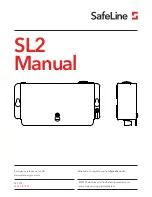
54 • Fieldbus Coupler 750-337, 750-338
Process
Image
WAGO-I/O-SYSTEM
750
CANopen
3.1.4 Process Image
3.1.4.1 Structure in principle
After powering up, the coupler recognizes all I/O modules plugged into the
node which supply or wait for data (data width/bit width > 0). In the nodes
analog and digital I/O modules can be mixed.
The coupler produces an internal process image from the data width and the
type of I/O module as well as the position of the I/O modules in the node. It is
divided into an input and an output data area.
The data of the digital I/O modules is bit orientated, i.e. the data exchange is
made bit for bit. The analog I/O modules are all byte orientated I/O modules,
i.e. modules where the data exchange is made byte for byte. These I/O mod-
ules include for example the counter modules, I/O modules for angle and path
measurement as well as the communication modules.
Note
For the number of input and output bits or bytes of the individual I/O modules
please refer to the corresponding I/O module description.
The data of the I/O modules is separated for the local input and output process
image in the sequence of their position after the coupler in the individual proc-
ess image.
In the respective I/O area, first of all analog modules are mapped, then all
digital modules, even if the order of the connected analog and digital modules
does not comply with this order. The digital channels are grouped, each of
these groups having a data width of 1 byte. Should the number of digital I/Os
exceed 8 bits, the coupler automatically starts another byte.
Note
A process image restructuring may result if a node is changed or extended. In
this case the process data addresses also change in comparison with earlier
ones. In the event of adding a module, take the process data of all previous
modules into account.
More Information
You can find the fieldbus specific process data architecture for all I/O Mod-
ules of the WAGO-I/O-SYSTEM 750 and 753 in the chapter „ Process Data
Architecture for CANopen“.
3.1.5 Data Exchange
With CANopen, the transmission of data, the triggering of events, the signal-
ling of error states etc. is made using communication objects. Each communi-
















































